Jarrod van der Ryken, the buds on the trees and the night were still
Amelia Barikin
Jarrod van der Ryken’s solo show, the buds on the trees and the night were still at Carpark Gallery, is very dark. Not just subtropical goth dark, but literally dark. The notice at the door advises that I “spend at least four minutes in the first space to let your eyes adjust,” but I’m pretty sure I needed at least ten before I could see anything at all. The opening night was a weird experience, navigating the blackness of the basement around bodies stumbling in space, people clutching at the walls, hands out to protect themselves. “This is freaky as,” one guy mutters, and I grin unseen as he scrambles for the exit.
In most of the gallery the only light comes from the large, lusciously glossy screens installed in each room. Slow, crisp, neo-baroque images fade in and fade out, accompanied by a soundtrack of construction sounds, bird song, and electronics. The physical objects in the space are dingy, minimal, and give off a forensic feel, functioning like crime scene clues for actions that need deciphering. Details of these objects appear on the screens, showing us what we might not otherwise see. Used towels on the floor. A milk crate filled with empty glass bottles. A large, ikebana style floral arrangement that fills the air with the scent of decay (ikebana = beauty in imperfection: who determines perfection?). An old wooden chair, bound tightly by extension cords and a long garden hose that snakes upwards and loops between objects like something out of a cybergoth tentacle hentai, except a suburban garage. A mirror propped against one wall partially draped with cloth, the remaining slit reflecting the footage of plants and leaves screening above. In many cultures, mirrors are covered during processes of mourning cloth has something to say about the potential barriers to self-realisation or perhaps the masturbatory quality of art itself (more on this later).
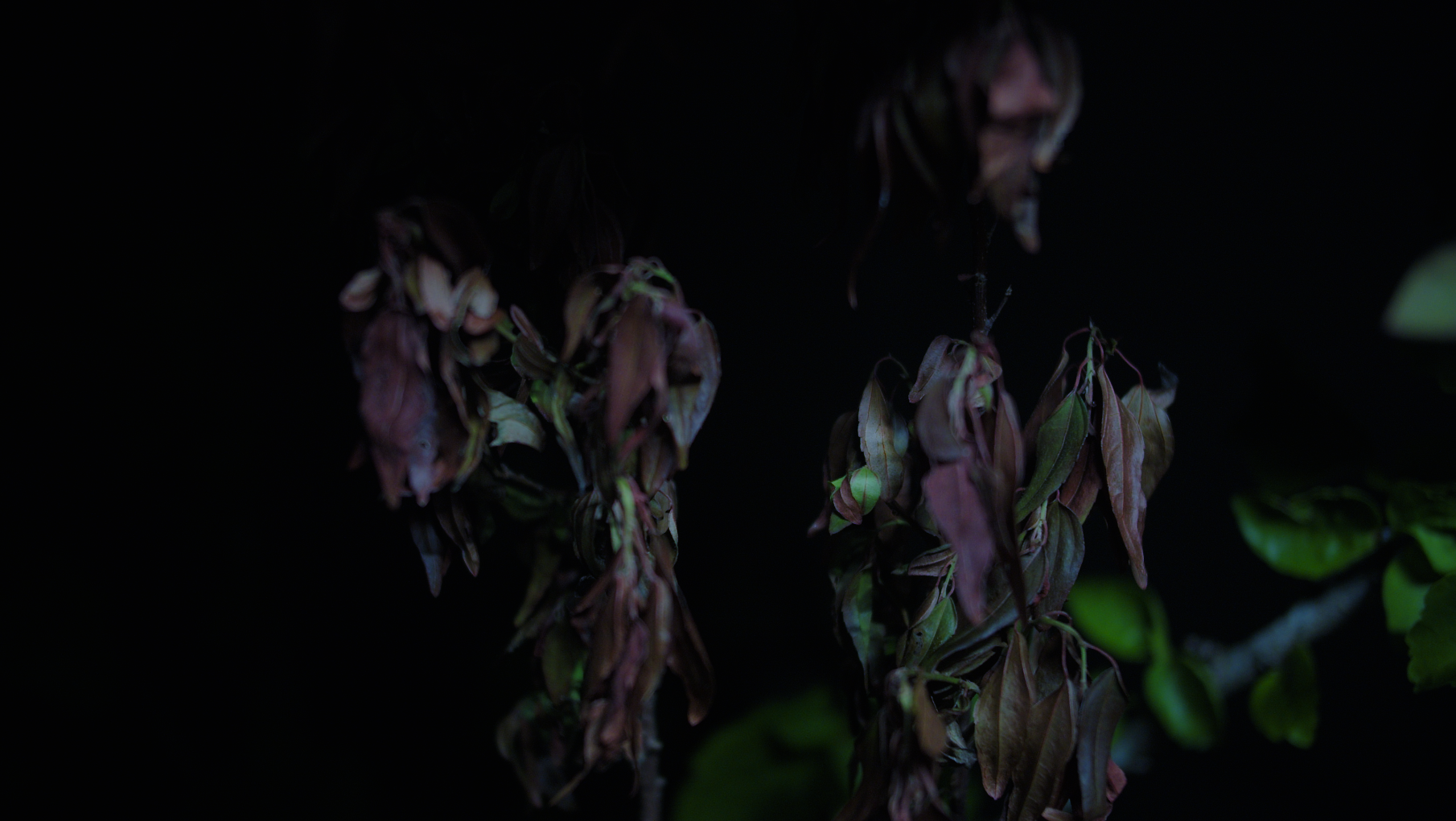
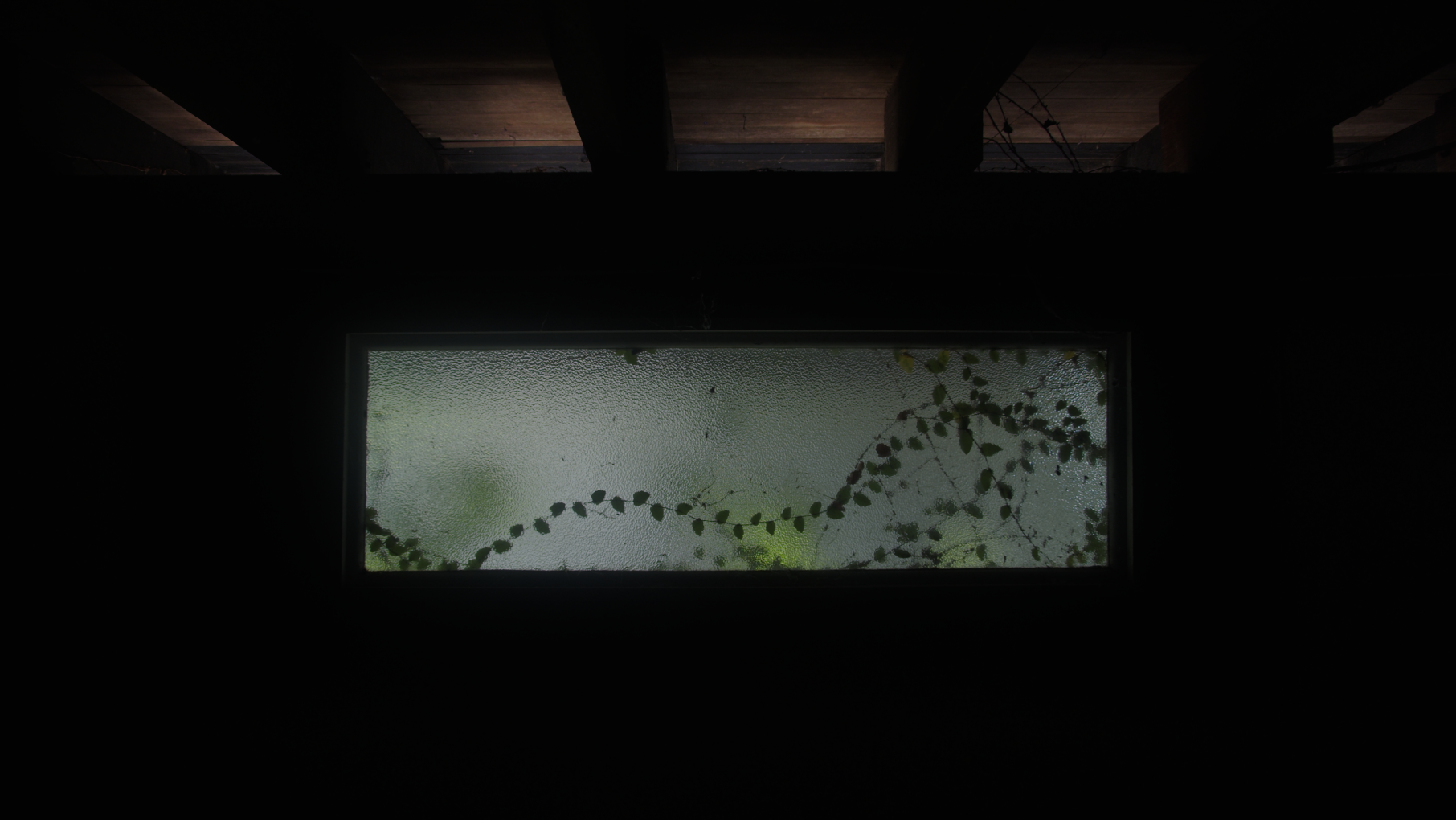
The footage for this show was shot from both inside the exhibition space in the weeks during installation, and from underneath the share house where Van der Ryken currently lives. The camera lingers on the bruise-coloured foliage of purple-green plants, electrical cords and outlets, the base of floorboards, coils of rope, dead leaves, relics from Van der Ryken’s childhood home. Barely moving fragments of the artist’s body reveal hip bones, skin covered by long hair, and fingers grasping the hose pipe like a parody of a hand job.
It’s not the first time Van der Ryken’s work has brought together physically distant spaces by chaining together images and objects. His 2022 show at Wreckers Artspace in Brisbane transformed the industrial warehouse into a welding workshop that doubled as a space for “self-work”—there was a video of the artist shot from behind masturbating while on his residency in the back room of the gallery—while simultaneously generating a kind of mnemonic homage to the Hudson River piers renowned as gay beats in New York in the 1970s (a context signalled through the videos of blurry gay porn included in the exhibition). Tara Heffernan explains that Wreckers was “formerly a traditionally macho-coded workplace, a bike wreckers. The exposed beams and corrugated surfaces hold traces of this history. A generative parallel: the cavernous inside is reminiscent of the iconic decaying piers along the Hudson River which were frequented by the local queer community as a discreet site for meetups.”
In Van der Ryken’s practice, these forms of “psychosexual occupation” constantly work to collapse the space of exhibition and the space of production, making way for the proliferation of queer desires. Although the initial impetus for many of his projects is highly personal, as Courtney Coombs notes, his exhibitions always hold “enough ambiguity to prevent a solely diaristic reading of the work.” At Carpark though, it’s only once the entire exhibition has been navigated that any kind of narrative begins to emerge, diaristic or otherwise.
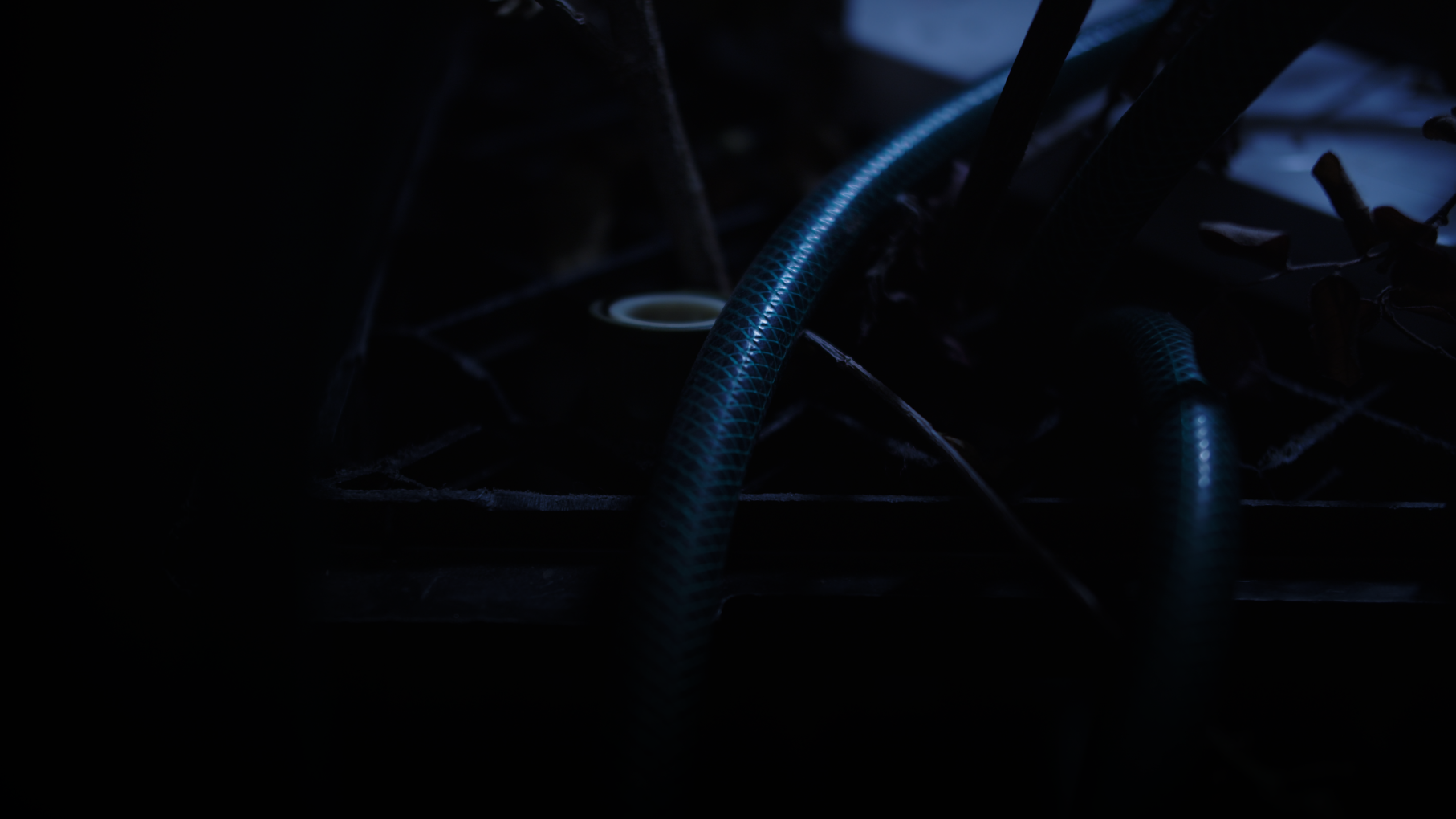
In the first room, a shot of a window partially covered in ivy spans one wall, a scene captured from beneath Van der Ryken’s current house—I keep thinking of the Tom Waits’ track, ‘What’s He Building’, as the sound of construction rings across the space. The camera never moves, but the light changes as the day passes. Strewn loosely around the space are what appear to be welded metal fixtures. Part furniture, part modernist sculpture, these are, Van der Ryken tells me, unfinished objects that his father worked on while he was young. “Has your Dad ever been to any of your exhibitions?” I ask. “Not yet,” he says, “Although he might come to this one.” There’s a large photograph mounted close to the floor on one of these metal frames: a figure walking outside amongst tall trees. The space is so dark that the image barely registers, becoming instead a dim snapshot of someone else’s memory.
On one dusty shelf just visible in the gloom is a homemade bong, crafted from what looks to be an iced coffee bottle. I’m told it belonged to Van der Rkyken’s father. It’s from this bong that the garden hose that coils throughout the entire exhibition originates. Trailing down the corridor like Ariadne’s thread through the labyrinth, the hose acts as a kind of “family tie” between the artist and his father, but also as a Shibari-like binding element between disjunctive times and spaces. It reminds me, perhaps idiosyncratically, of the hose that spouts from the head in James Gleeson’s 1941 surrealist painting Structural Elements of a Friend (Self Portrait), another queer work that represents “blood ties” by way of troubled symbolism. On the screens in Carpark Gallery the hose glistens, phallic and thick in the darkness, like something torn from the suburban underworld of David Lynch’s 1986 film Blue Velvet.
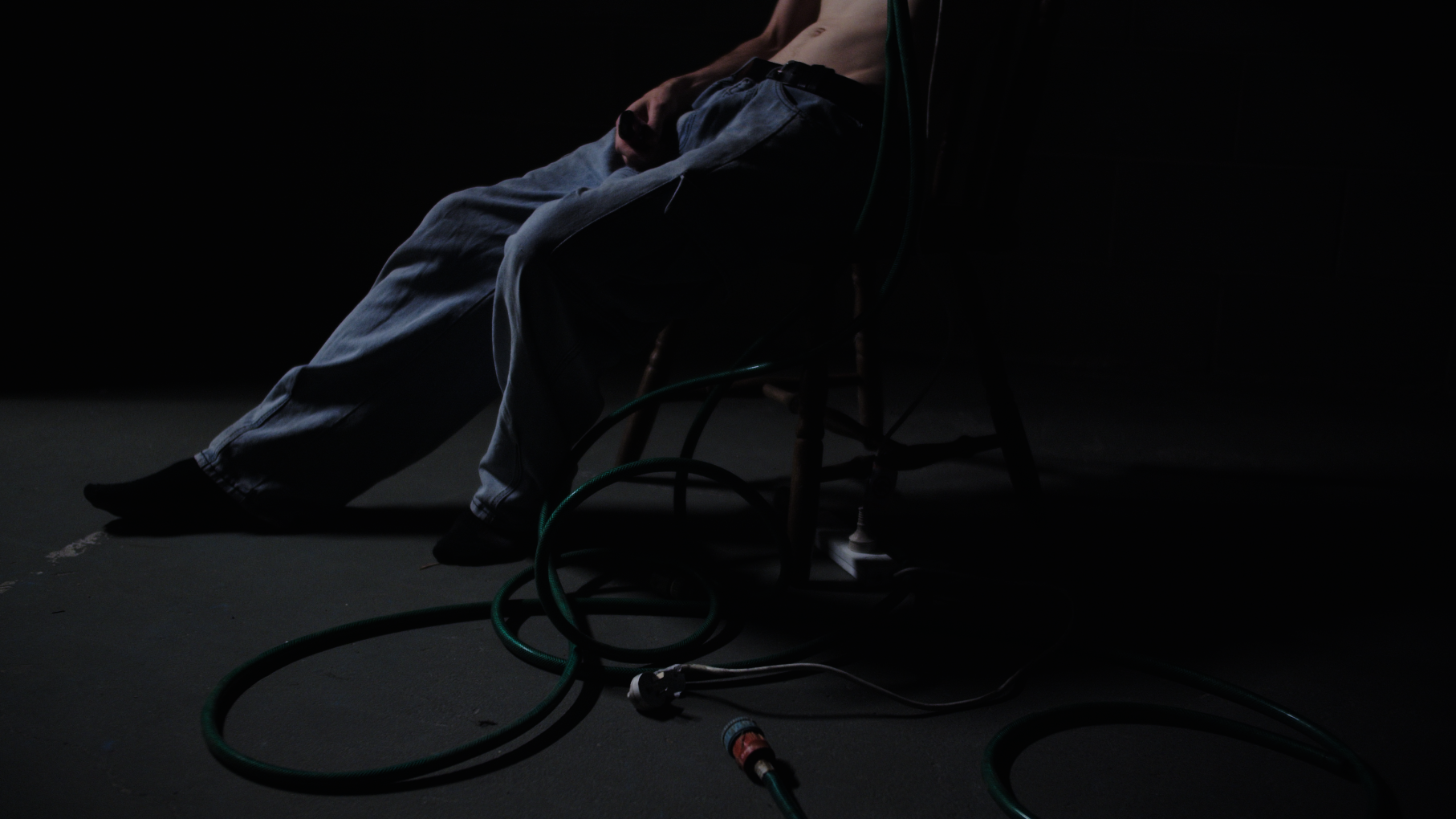
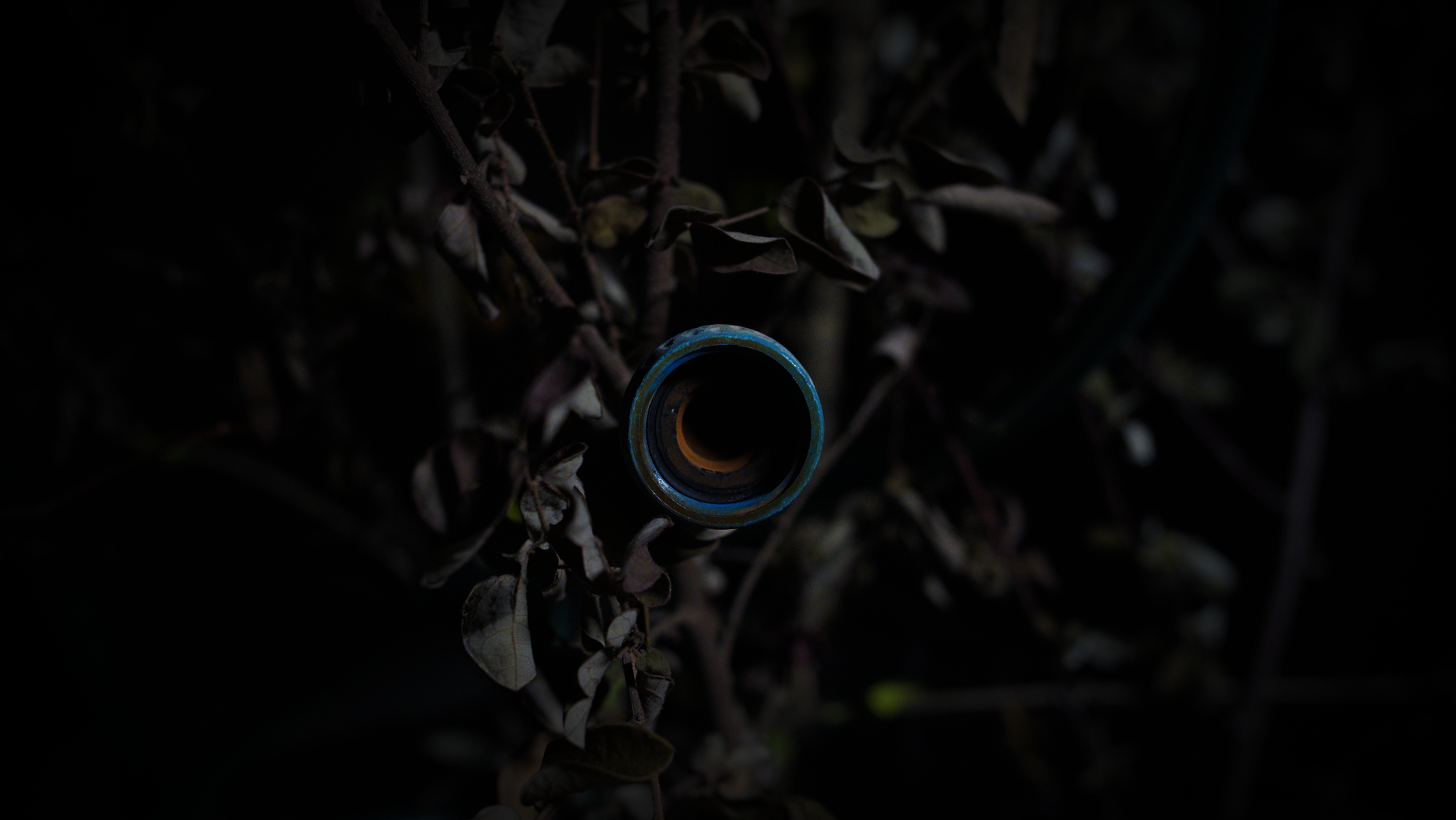
In the second room, the artist is pictured half-naked and slumped motionless on a chair, head out of the frame. He’s wearing baggy jeans buckled tight and low. The chair he’s seated on is one of the few physical objects in the space, while the jeans can be found discarded in the darkness at the back of the gallery, belt now unbuckled but still attached. Meanwhile, the soundtrack tightens, morphing into something more synthy and tense—like a John Carpenter track on ketamine. The final shot (although, of course, all time here is queer and looped, so there really is no “final” moment) is a close-up still of the circular entrance to the hose pipe.
It is covered in cum—presumably the artist’s, presumably produced during the exhibition’s install period, presumably in the same room I am currently standing in. The shot is held, static, before time enters the image once more and the fluid drips slick off the plastic and out of the frame. The image fades to black. What was up until this moment read as a heavily masculine tie for linking generations (that phallic hosepipe or bloodline) instead becomes an orifice: a hole for fucking, for self-gratification, and territorialisation. It’s a perverse kind of erotics, a means to reclaim space and time. I think about the queerness of kin, of dialogue through generations, of relays of trauma and acceptance, and I wonder what Van der Ryken’s Dad might make of it all. His ancient bong in the basement becoming the origin point of whatever is happening, whatever might have already happened, what might or might not ever happen again. Forms of potential connection double as vehicles for escape. The buds on the trees and the night were still.
Amelia Barikin writes and teaches on the unceded lands of the Jagera and Turrbal people in Meanjin, and is a member of the KINK research collective on queer Australian art.


